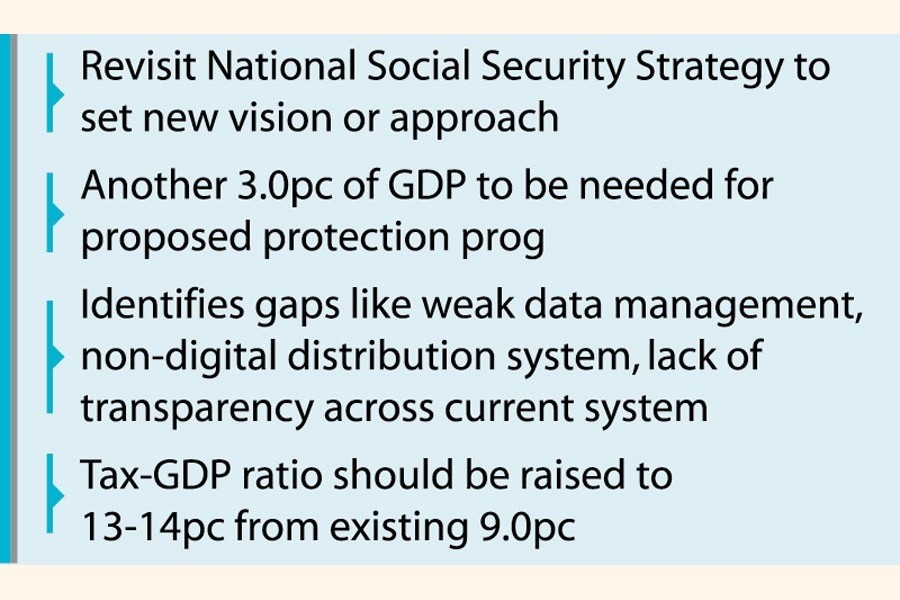Bangladesh's social-protection schemes need to be reshuffled to deal with emerging risks in the post-pandemic new normal wherein more vulnerable groups have to be served, South Asian Network on Economic Modeling (SANEM) proposes.
"Given the slow progress and the need for new instruments to address new vulnerabilities emerged out of COVID-19, Bangladesh needs to revisit National Social Security Strategy (NSSS) to set new vision or approach to social protection," says SANEM Chairman Dr Bazlul Haque Khondker.
Speaking at a webinar titled 'Social Safety Net: Where Does Bangladesh Stand?' on Thursday, he said the country's private sector should be engaged in the creation of an inclusive social-protection system.
"We have to introduce social-care programmes for children, elders and sick, and activate labour-market programmes by including formal and informal workers in various sectors," he said.
He proposed reducing existing more than 150 social-security programmes to 10-12 for the convenience of monitoring.
As there are leakages and inefficiencies in the existing social-protection system, he said, the new recipe should be inclusive.
Professor Khondker said an additional 3.0 per cent of GDP will be needed to implement his proposed social-protection programmes.
"Some 1.0 to 1.5 per cent we can manage from private sector, the government can arrange the rest amount of funds," he says.
"A new framework has been advocated based on four pillars of social protection - social assistance, social insurance, labour-market policies, social care and shared burden between the public and private sector," he adds.
He thinks private sector, public-private partnership and active labour scheme, and insurance could help manage the funds.
Mr Khondker feels that stronger social-insurance programme could solve much of the fund crisis in implementing extended and inclusive social- protection programme.
The SANEM chair said there should be 13-14-percent tax-GDP ratio from the existing 9 per cent.
His organisation has identified a number of gaps like weak data management, non-digital distribution system and lack of transparency in the flow of information across the system.
Currently, the government spends 3.0 per cent of GDP on social- assistance programmes, which reportedly benefit 35 per cent of the population.
SANEM sees social protection as an important policy instrument in Bangladesh-in the wake of evolving realities from the changing global paradigm.
From independence to 2015 the system evolved around addressing poverty and tackling new deprivation. "The year 2015 was a game changer for social protection with the approval for the National Social Security Strategy (NSSS)," the economist further said, adding that progress with social-protection reforms has been slow.
He said promises made in the NSSS should be implemented as soon as possible.
"The new post-Covid approach should be an inclusive one with no one left out," says Dr Bazlul.
The Network on economic modeling thinks approaches to social protection during COVID-19 also have implications for Bangladesh's social-protection system.
During the pandemic, it notes, the global system not only witnessed unprecedented horizontal and vertical expansion but also recorded emergence of new instruments to tackle new vulnerability which could not be addressed with traditional programmes.


